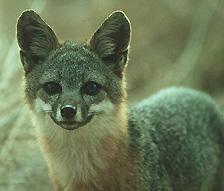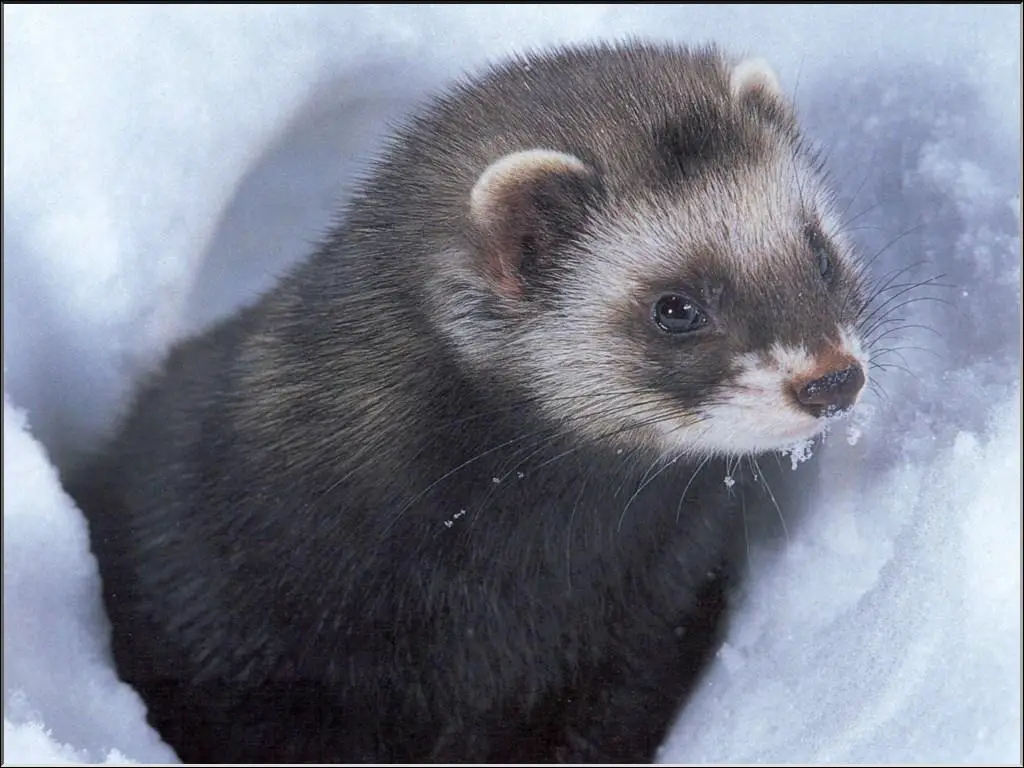Island Fox
The Island Fox is native to 6 of the 8 Channel Islands of California. There are 6 subspecies of the Island Fox which are unique to the particular island that it lives on and therefore reflects its evolutionary history. The Island Fox is also known as the Coast Fox, Island Gray Fox, Short-Tailed Fox, Channel Islands Fox, California Channel Island Fox, Channel Islands Gray Fox, and the Insular Gray Fox.
The Island Fox shares the mainland with the Gray Fox, which it is actually descended from. It is also a bit smaller than a domesticated house cat, and is the 2nd smallest fox in the world. It is small due to dwarfism. The Island Fox is about 48 to 50 cm long from head-to-body, and stands at only 12 to 15 cm at shoulder height. Its tail is 11 to 29 cm long which is more than half the size of Gray Foxes. They weigh only 1.3 to 2.8 kilograms, and the male is always larger than its female. The largest Island Fox is found on Santa Catalina Island, and the smallest is found on Santa Cruz Island.
It has gray fur on its head, and reddish sides. It has white fur on its belly, throat, and the lower half of its face. It has a black stripe on its tail’s dorsal surface. It generally has a darker coat compared to the Gray Fox. It molts annually during August to November.
The 6 subspecies of the Island Foxes are:
- Urocyon littoralis littoralis of San Miguel Island
- Urocyon littoralis santarosae of Santa Rosa Island
- Urocyon littoralis santacruzae of Santa Cruz Island
- Urocyon littoralis dickeyi of San Nicolas Island
- Urocyon littoralis catalinae of Santa Catalina
- Urocyon littoralis clementae of San Clemente Island
The preferred habitat of the Island Fox are in high density woodlands. These woody areas should have a complex layer of vegetation and have perennially fruiting shrubs. They can live in all of the biomes of the island, such as temperate grassland and chaparral, and temperate forest. No island supports more than 1000 foxes.
Their diet is quite varied. The Island Fox eats lizards, crabs, eggs, birds, insects, and fruits. It even eats small mammals such as deer mice. It will hunt by itself rather than in packs. However, its activity fluctuates with the seasons as it is more active during the summer than in the winter time.
As it is so isolated in terms of geography, it is not immune to any diseases and parasites brought from the mainland and id vulnerable to ones that domesticated dogs may carry. Predators include the Golden Eagle as well as humans, and the Island Fox’s numbers were devastated in the 1990’s. 4 of the Island Fox subspecies are now federally protected as it has been on the endangered species list since 2004. Efforts now have been undertaken to try and rebuild the Island Fox’s populations and to restore the Channel Islands ecosystem. Fortunately, to date, these efforts have been successful.




That’s a unique animal